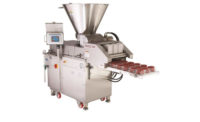Study examines productivity dynamics, drivers in U.S. manufacturing
The manufacturing sector, a traditional driver of overall productivity, has seen its pace of productivity growth slow over the last 15 years.
A new study by the Manufacturers Alliance for Productivity and Innovation (MAPI), Arlington, Va., analyzes productivity growth in a range of manufacturing subsectors over the past 25 years, and provides statistical evidence on the importance that capital investment and educated labor have on productivity performance.
The research explores the drivers of productivity performance on subsectors. In particular, the study looks for ways that manufacturers who have already invested in capital equipment can increase productivity and innovation.
The report, “Productivity Dynamics in U.S. Manufacturing,” is the first in a series on productivity that the MAPI Foundation is producing this year.
Produced by Cliff Waldman, director of economic studies at the MAPI Foundation, and sponsored by Rockwell Automation, Milwaukee, Wis., the study uses well-accepted theory and regression analysis of several decades’ worth of data to illuminate evidence that innovation and capital investment play a significant role in driving multi-factor productivity growth (i.e., output per unit of a combined set of inputs, including labor, materials and capital) in a wide range of manufacturing subsectors. Capital investment is the mechanism by which productivity-enhancing innovation spreads through companies, supply chains and the broad economy.
"In the manufacturing sector, strong productivity performance is needed to meet the globally driven challenges of cost pressures and competitiveness," Waldman says. "For both manufacturing and the economy as a whole, the recent slowdown in productivity causes concern because it contributes to both slow output and wage growth."
"Isolating the critical investments required to improve productivity performance is an important foundational element in the MAPI Foundation's first study," adds Joe Kann, vice president of global business development at Rockwell Automation. "We look forward to the conclusions regarding industry-specific productivity drivers that will be identified in the remaining studies."
Waldman's research finds that another key link to productivity performance is the labor force participation rate of the population holding a B.A. degree or higher, in effect the economy's supply of educated labor.
Productivity stagnation
The manufacturing sector, a traditional driver of overall productivity, has seen its pace of productivity growth slow over the last 15 years. As Waldman notes, part of this is due to slowing productivity growth in the computer and electronic products industry, which has played an outsized role in driving manufacturing productivity growth in recent decades.
According to the study, industry subsectors that have experienced relative improvements in productivity performance since 1993 include machinery, transportation equipment and printing. But, their growth has not been enough on an absolute basis to replace the decline in computer subsector productivity. Industries with a noticeable drop since 1993 in their relative pace of productivity growth include primary metals and petroleum and coal products.
Strong subsector correlations
The paper reveals strong cross-subsector correlations for both labor productivity growth and multifactor productivity growth. The apparent interconnectedness of productivity performance across industries, says Waldman, is likely the result of supply chain linkages, innovation spillovers, cluster impacts and trade channels. Such evidence suggests that, where investments in any one industry lead to faster productivity growth, such expenditures can have impacts that extend to other subsectors as well.
Waldman concludes that a beneficial policy response must consist of a coordinated program that stimulates manufacturing equipment investment as well as innovation investment and increases the supply of educated labor in the broad economy.
The MAPI Foundation’s next study on productivity builds on this work and will reveal the findings of a national survey on technology and automation investment that was conducted to determine the drivers and pace of change in various manufacturing industries.
Looking for a reprint of this article?
From high-res PDFs to custom plaques, order your copy today!







